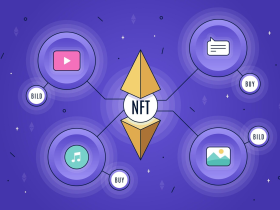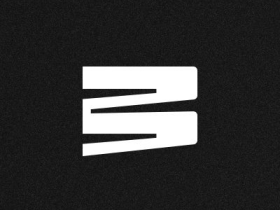You have probably heard the term “blockchain technology” in relation to cryptocurrencies like Bitcoin over the past few years. To be more precise, you could be wondering, “What is blockchain technology?” Given that blockchain lacks a clear definition that the average person may readily grasp, it appears to be a platitude, although a hypothetical one. It is essential to provide an explanation of “what is blockchain technology,” covering its applications, mechanisms, and growing significance in the digital realm.
It is your responsibility to get knowledgeable about this developing technology in order to be ready for the future as blockchain expands and becomes more approachable. This is the ideal venue to learn the fundamentals of blockchain if you are new to it. You may find out the solution to the query “what is blockchain technology?” in this article. You will also discover the workings of blockchain, its significance, and the ways in which this sector can help you progress in your career.
Blockchain Technology: What Is It?
Blockchain is a technique for storing data that makes it difficult or impossible for outside parties to alter, hack, or manipulate the system. A distributed ledger, or blockchain, is a network of computers that replicates and disperses transactions between themselves.
Blockchain technology is a framework that uses many databases, referred to as the “chain,” connected by peer-to-peer nodes, to store public transactional records, or blocks. This type of storage is commonly known as a “digital ledger.”
The digital signature of the owner authorizes each transaction in this ledger, ensuring its authenticity and preventing any manipulation. Because of this, the data in the digital ledger is extremely safe.
To put it another way, the digital ledger is essentially a network of multiple computers sharing a Google spreadsheet where transactional data are kept according to actual purchases. The intriguing aspect is that while everyone may view the data, it cannot be altered.
What Makes Blockchain So Popular?
Assume you are sending money from your bank account to friends or family. Using the other person’s account number, you would access online banking and transfer the funds to them. Once the transaction is completed, the transaction records are updated by your bank. It sounds quite easy, doesn’t it? The majority of us overlook a possible problem.
These kinds of transactions are easily manipulated. Because of this reality, people are frequently hesitant to use these kinds of transactions, which is why third-party payment programs have grown in popularity recently. However, Blockchain technology was primarily developed in order to address this weakness.
Blockchain is a digital ledger that is garnering a lot of traction and attention in the technology world lately. However, why has it grown so well-liked? To fully understand the idea, let’s examine it in more detail.
Maintaining accurate records of data and transactions is essential to corporate operations. Frequently, the business must manage this information internally or through intermediaries like bankers, brokers, or attorneys, which adds time, expense, or both. Thankfully, Blockchain helps to expedite the transaction and circumvents this drawn-out procedure, saving time and money.
The majority of people believe that Bitcoin and Blockchain may be used interchangeably, but that is untrue. Although blockchain technology can enable a wide range of applications connected to different industries, such as manufacturing, supply chains, and banking, Bitcoin is a currency that depends on blockchain technology for security.
Advantages of Blockchain Technology
In a world going more digital, blockchain is a new technology that offers numerous benefits.
Exceptionally Safe
By using a digital signature function, it ensures that transactions are free from fraud and prevents other users from altering or corrupting an individual’s data in the absence of a unique digital signature.
Decentralized Framework
Traditionally, transactions require the consent of regulatory bodies such as banks or governments. Nevertheless, Blockchain technology allows for user consensus, which makes transactions easier, safer, and faster.
The Ability to Automate
When the trigger’s conditions are satisfied, it is programmable and can produce automated events, payments, and systematic actions.
The Architecture and Structure of Blockchain
Fundamentally, a blockchain is a chain of blocks, each of which holds a collection of data. It is a distributed, immutable, and decentralized ledger. A chronological chain of information is created by connecting the blocks using cryptographic methods. Through its consensus mechanism, which consists of a network of nodes that agree on the authenticity of transactions before adding them to the blockchain, a blockchain’s structure is intended to secure the security of data.
Drawbacks
Both blockchain technology and cryptography need the usage of public and private keys; it has been noted that private key issues have arisen. One drawback of blockchains is that users encounter many difficulties if they misplace their private key. Scalability limitations resulting from a cap on the number of transactions per node are an additional drawback. It can therefore take several hours to complete various transactions and other operations. Another major drawback of blockchain is that it can be challenging to add to or modify information once it has been stored.
Blocks: A blockchain’s blocks are made up of three primary parts:
1. Metadata like the hash of the preceding block and a timestamp with a random integer used for mining are contained in the header.
2. The transactional and smart contract data that is saved in the block is contained in the data section.
3. Finally, the hash is a distinct cryptographic value that serves as a block representation and is utilized for verification.
Block Time
The time required to create a new block in a blockchain is referred to as block time. The length of a block on a distinct blockchain might range from a few seconds to minutes or even hours. While longer block times may delay transaction confirmations but lessen the likelihood of conflicts, shorter block times may result in faster transaction confirmations but a larger possibility of conflicts.
Hard Forks
In the context of blockchain technology, a hard fork is a permanent split in the chain’s history that leaves two distinct chains. It may occur when a blockchain’s protocol undergoes a fundamental change and all nodes disagree on the upgrade. Hard forks are a problem that needs to be resolved by consensus among network users and have the potential to split existing cryptocurrencies or establish new ones.
Decentralization
The primary characteristic of blockchain technology is decentralization. A single central authority cannot take control of the network in a decentralized blockchain. In decentralization, a network of nodes that jointly verify and approve the transactions to be added to the blockchain share decision-making authority. Transparency, trust, and security are all aided by the decentralized structure of blockchain technology. It also lessens the hazards associated with data manipulation and lowers the risk of relying on a single point of failure.
Finality
The irreversible confirmation of a blockchain transaction is known as finality. A transaction turns into an immutable block that cannot be undone if and when it is added to one and the block is confirmed by the network. High levels of security and confidence in Blockchain Types & Sustainability are provided by this feature, which guards against duplicate spending and guarantees the integrity of the data.
Openness
Blockchain technology’s openness allows anyone who wants to join the network to access the blockchain. As long as they are aware of the consensus rules, anyone can join the network, validate transactions, and contribute new blocks to the blockchain, indicating that it is accessible to all. Because it allows for participation from a variety of stakeholders, openness fosters inclusivity, transparency, and creativity.
Public Blockchain
This type of blockchain lets anybody join the network, conduct transactions, and take part in the consensus-building process. It is accessible to the general public. Due to the public recording of every transaction, public blockchains are transparent.
How Does Blockchain Technology Operate?
You may have noticed that a lot of companies all around the world have been utilizing Blockchain technology in recent years. However, how precisely does blockchain technology operate? Is this a little addition or a major alteration? Since blockchain technology is still in its infancy and has the potential to be revolutionary in the future, let’s start by dispelling some common misconceptions about it.
Three cutting-edge technologies are combined to create blockchain:
- keys cryptography
- a peer-to-peer network with a common ledger
- A computer method for storing the network’s records and transactions
The private key and the public key are the two keys used in cryptography. The successful completion of transactions between two parties is facilitated by these keys. These two keys belong to each person, and they are used to create a safe reference for their digital identity. The key component of Blockchain technology is this protected identity. This identity, which is used to authorize and regulate transactions in the bitcoin space, is known as a “digital signature.”
A huge number of people acting as authorities use the digital signature to come to a consensus on transactions and other issues. The digital signature is combined with the peer-to-peer network. When they approve a deal, a mathematical verification certifies it, leading to a successful secured transaction between the two parties linked to the network. In summary, blockchain users use cryptography keys to carry out various digital operations over the peer-to-peer network.
Blockchain Types
Different kinds of blockchains exist. They are listed in the following order:
Networks of Private Blockchains
Private blockchains are typically effective for private companies and organizations, operating on closed networks. Private blockchains allow businesses to tailor network characteristics, accessibility and permission choices, and other critical security features. Networks using private blockchains are managed by a single authority.
Blockchain Networks for Public Use
Public blockchains are the source of Bitcoin and other cryptocurrencies, and they also contributed to the rise in popularity of distributed ledger technology (DLT). Additionally, public blockchains aid in the removal of some obstacles and problems including centralization and security holes. DLT distributes data throughout a peer-to-peer network as opposed to storing it in a single place. Information authenticity is confirmed via a consensus process; two popular consensus techniques are proof of stake (PoS) and proof of work (PoW).
Networks of Permitted Blockchains
Permissioned blockchain networks, often referred to as hybrid blockchains, are private blockchains that grant specific access to individuals who have been granted authorization. These kinds of blockchains are usually set up by organizations to combine the best features of both worlds, and they allow for better organization when deciding who can join in the network and in which transactions.
Blockchains for Consortiums
Consortium blockchains are similar to permissioned blockchains in that they consist of both public and private components. The difference is that a single consortium blockchain network is managed by several organizations. These kinds of blockchains can provide superior security once they are operating, despite the fact that they can be more difficult to set up initially. Consortium blockchains are also the best option for working with several organizations at once.
Hybrid Blockchains
Public and private blockchains are combined to create hybrid blockchains. In a hybrid blockchain, certain sections are transparent and open to the public, while other sections are private and only available to particular, approved individuals. Because of this, hybrid blockchains are perfect to utilize in situations where privacy and transparency need to be balanced. Sensitive information can be kept private in supply chain management, for instance, even when many parties can access some information.
Sidechains
Additional functionality and scalability are made possible by sidechains, which are distinct blockchains that operate in parallel with the main blockchain. With sidechains, developers may test out new functions and uses without jeopardizing the integrity of the primary blockchain. Sidechains, for instance, can be used to construct certain consensus processes and to create decentralized applications. To lessen congestion and improve scalability, sidechains can also be used to handle main blockchain transactions.
Blockchain Layers
Building several blockchain layers on top of one another is referred to as “blockchain layers.” Every layer can have its own rules, functionality, and consensus mechanism that can communicate with other layers. Due to the capacity to handle transactions concurrently across multiple layers, this guarantees increased scalability. As an illustration, the Lightning Network is a second layer solution that facilitates quicker and less expensive transactions by opening up payment channels between users and is built on top of the Bitcoin blockchain.
The Transaction Process
The way blockchain technology authorizes and verifies transactions is one of its key characteristics. For instance, the first party would attach the transaction data to the second party’s public key if they both wanted to complete a transaction using their private and public keys, respectively. This entire set of data is compiled into a block.
A timestamp, a digital signature, and other significant, pertinent data are included in the block. It should be emphasized that the identity of the parties to the transaction are not included in the block. The transaction is then properly completed when the correct person uses his private key and compares it with the block, which is then broadcast throughout all of the network’s nodes.
The Blockchain can store transactional data about homes, cars, and other items in addition to money transactions.












Leave a Reply